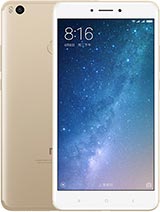Compare
Specifications
Xiaomi Mi Max 2 |
Samsung Galaxy J7 Pro |
|
|
Full
Differences
Change compare mode
|

|

|
Xiaomi Mi Max 2 |
Samsung Galaxy J7 Pro |
| Network | ||
|---|---|---|
| Technology | GSM / CDMA / HSPA / EVDO / LTE | GSM / HSPA / LTE |
| 2G bands | GSM 850 / 900 / 1800 / 1900 - SIM 1 & SIM 2 | GSM 850 / 900 / 1800 / 1900 - SIM 1 & SIM 2 (dual-SIM model only) |
| CDMA 800 & TD-SCDMA | ||
| 3G Network | HSDPA 850 / 900 / 1900 / 2100 | HSDPA 850 / 900 / 1700(AWS) / 1900 / 2100 |
| CDMA2000 1xEV-DO | ||
| 4G Network | 1, 3, 5, 7, 8, 38, 39, 40, 41 | 1, 2, 3, 4, 5, 7, 8, 12, 17, 20, 28, 38, 40, 41, 66 |
| Speed | HSPA 42.2/5.76 Mbps, LTE (2CA) Cat6 300/50 Mbps | HSPA 42.2/5.76 Mbps, LTE (2CA) Cat6 300/50 Mbps |
| Launch | ||
|---|---|---|
| Announced | 2017, May | 2017, June |
| Status | Available. Released 2017, June | Available. Released 2017, July |
| Body | ||
|---|---|---|
| Dimensions | 174.1 x 88.7 x 7.6 mm (6.85 x 3.49 x 0.30 in) | 152.5 x 74.8 x 8 mm (6.00 x 2.94 x 0.31 in) |
| Weight | 211 g (7.44 oz) | 181 g (6.38 oz) |
| Build | Glass front (Gorilla Glass 3), aluminum back, aluminum frame | Glass front, aluminum back, aluminum frame |
| SIM | Hybrid Dual SIM (Nano-SIM/ Micro-SIM, dual stand-by) | Single SIM (Nano-SIM) or Dual SIM (Nano-SIM, dual stand-by) |
| Display | ||
|---|---|---|
| Type | IPS LCD | Super AMOLED |
| Size | 6.44 inches, 114.3 cm2 (~74.0% screen-to-body ratio) | 5.5 inches, 83.4 cm2 (~73.1% screen-to-body ratio) |
| Resolution | 1080 x 1920 pixels, 16:9 ratio (~342 ppi density) | 1080 x 1920 pixels, 16:9 ratio (~401 ppi density) |
| Protection | Corning Gorilla Glass 3 | |
| Always-on display | ||
| Platform | ||
|---|---|---|
| OS | Android 7.1.1 (Nougat), MIUI 11 | Android 7.0 (Nougat), upgradable to Android 9.0 (Pie), One UI |
| Chipset | Qualcomm MSM8953 Snapdragon 625 (14 nm) | Exynos 7870 Octa (14 nm) |
| CPU | Octa-core 2.0 GHz Cortex-A53 | Octa-core 1.6 GHz Cortex-A53 |
| GPU | Adreno 506 | Mali-T830 MP1 |
| Memory | ||
|---|---|---|
| Card slot | microSDXC (uses shared SIM slot) | microSDXC (dedicated slot) |
| Internal | 32GB 4GB RAM, 64GB 4GB RAM, 128GB 4GB RAM | 16GB 3GB RAM, 32GB 3GB RAM, 64GB 3GB RAM |
| eMMC 5.1 | eMMC 5.1 | |
| Main Camera | ||
|---|---|---|
| Modules | 12 MP, f/2.2, 1/2.9", 1.25µm, PDAF | 13 MP, f/1.7, 27mm (wide), AF |
| Features | Dual-LED dual-tone flash, HDR, panorama | LED flash, panorama, HDR |
| Video | 4K@30fps, 720p@120fps | 1080p@30fps |
| Selfie Camera | ||
|---|---|---|
| Modules | 5 MP, f/2.0 | 13 MP, f/1.9, 28mm (wide), 1/3.1", 1.12µm |
| Features | LED flash | |
| Video | 1080p@30fps | 1080p@30fps |
ADVERTISEMENT
| Sound | ||
|---|---|---|
| Loudspeaker | Yes, with stereo speakers | Yes |
| 3.5mm jack | Yes | Yes |
| Comms | ||
|---|---|---|
| WLAN | Wi-Fi 802.11 a/b/g/n/ac, dual-band, Wi-Fi Direct, DLNA | Wi-Fi 802.11 a/b/g/n/ac, dual-band, Wi-Fi Direct |
| Bluetooth | 4.2, A2DP, LE | 4.1, A2DP, LE |
| Positioning | GPS, GLONASS, BDS | GPS, GLONASS, BDS |
| NFC | No | Yes |
| Infrared port | Yes | No |
| Radio | FM radio | FM radio |
| USB | USB Type-C | microUSB 2.0, OTG |
| Features | ||
|---|---|---|
| Sensors | Fingerprint (rear-mounted), accelerometer, gyro, proximity, compass | Fingerprint (front-mounted), accelerometer, gyro, proximity, compass |
| ANT+ | ||
| Battery | ||
|---|---|---|
| Type | Li-Ion 5300 mAh, non-removable | Li-Ion 3600 mAh, non-removable |
| Charging | 18W wired, QC3 | |
| Talk time | Up to 24 h (3G) | |
| Music play | Up to 91 h | |
| Misc | ||
|---|---|---|
| Colors | Gold, Matte Black | Black, Blue, Gold, Rose Gold | SAR | 1.22 W/kg (head) 0.71 W/kg (body) | 0.71 W/kg (head) |
| SAR EU | 0.57 W/kg (head) 1.33 W/kg (body) | |
| Models | MDE40, MDI40 | SM-J730G, SM-J730GM |
| Price | About 200 EUR | About 200 EUR |
| Tests | ||
|---|---|---|
| Performance | GeekBench: 2445 (v4.4) GFXBench: 3.5fps (ES 3.1 onscreen) |
GeekBench: 3768 (v4.4) GFXBench: 1.9fps (ES 3.1 onscreen) |
| Display | Contrast ratio: 1294:1 (nominal), 2.561 (sunlight) | Contrast ratio: Infinite (nominal), 3.998 (sunlight) |
| Camera | Compare PHOTO / Compare VIDEO | |
| Loudspeaker | Voice 78dB / Noise 71dB / Ring 79dB | Voice 68dB / Noise 69dB / Ring 82dB |
| Audio quality | Noise -93.4dB / Crosstalk -98.8dB | Noise -92.7dB / Crosstalk -92.4dB |
| Battery (old) | Endurance rating 126h | Endurance rating 107h |